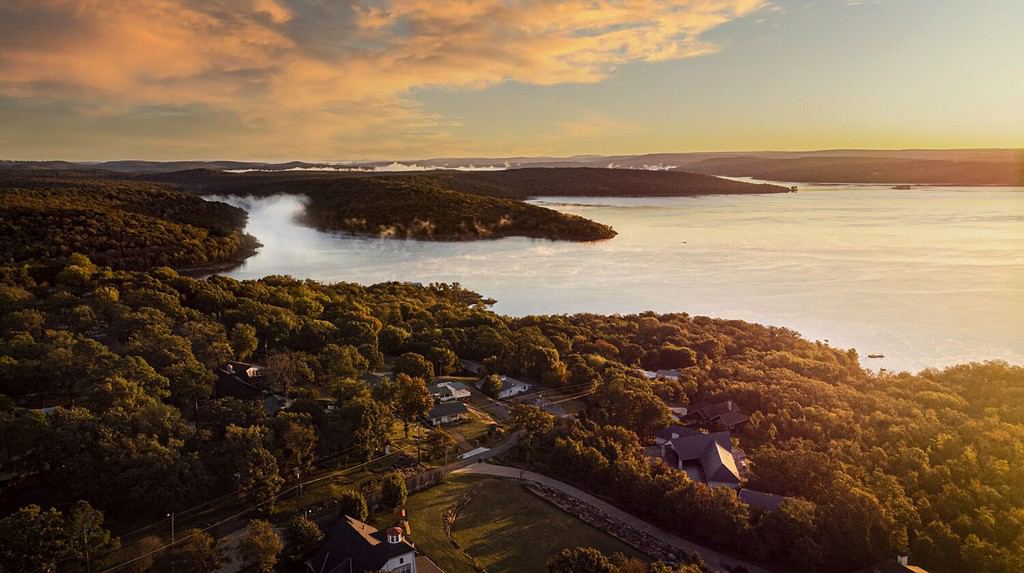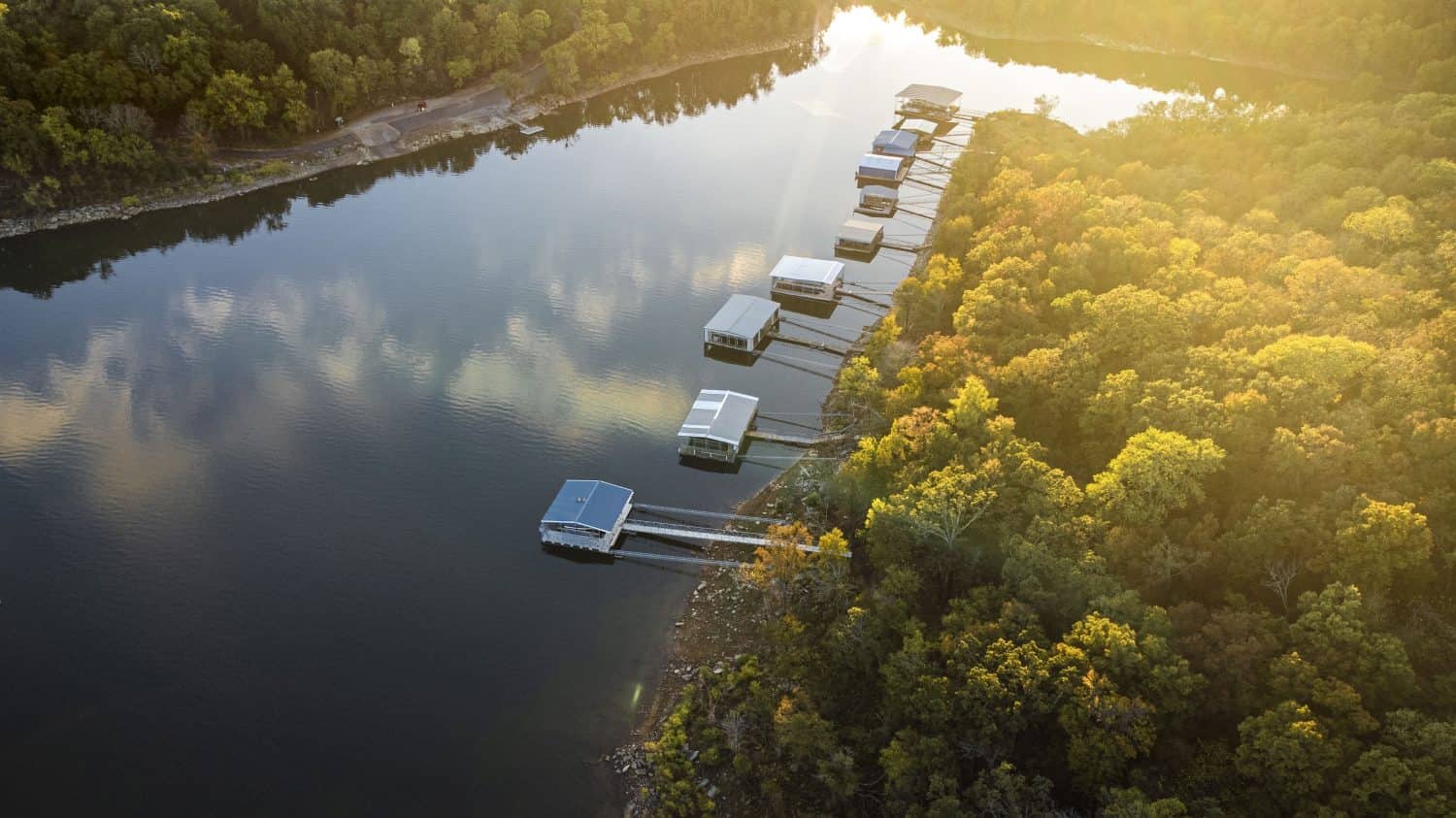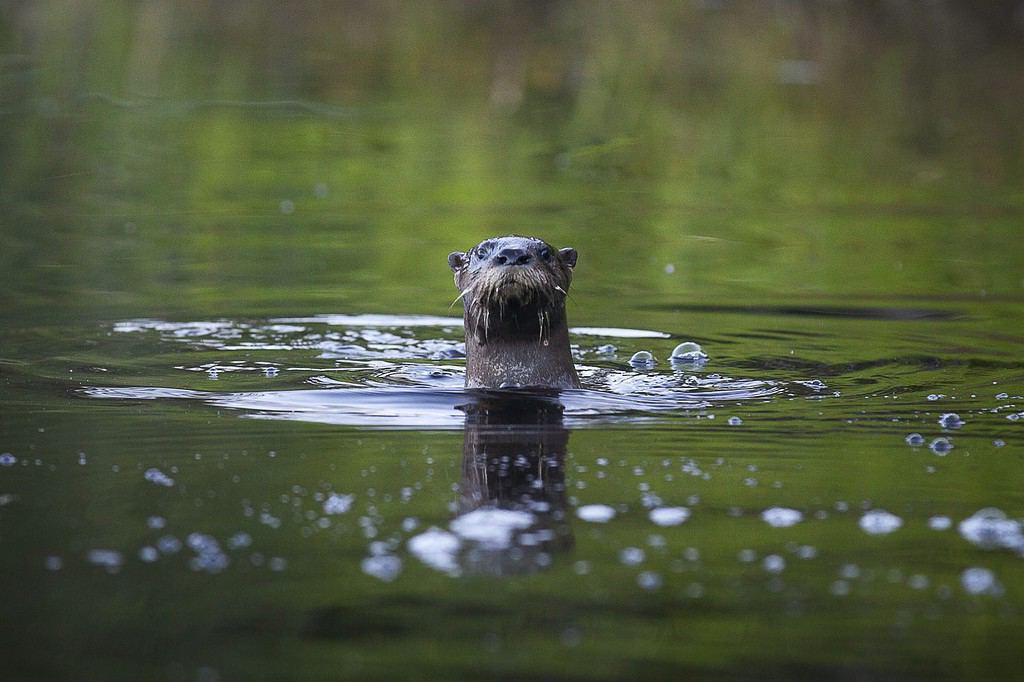Lake Tenkiller, also known as Tenkiller Ferry Lake, lies in northeastern Oklahoma. This Oklahoma gem has a history intertwined with the Cherokee Nation. Completed in 1952, the lake was named after the Tenkiller family. Today, Lake Tenkiller serves as a reservoir providing fresh water and electricity to surrounding communities, as well as a source of many recreational opportunities.
How Deep Is Lake Tenkiller?

Known as one of the clearest and deepest lakes in the state, Lake Tenkiller has a maximum depth of 132.7 feet, according to the Oklahoma Water Resources Board. The lake is approximately 35 miles long. It has 130 miles of scenic shorelines and provides 12,900 acres of surface area.
Where Is Lake Tenkiller?
Lake Tenkiller lies south of Tahlequah, the capital of the Cherokee Nation, and north of I-40 in northeastern Oklahoma. It takes less than half an hour to get to the lake from Tahlequah, Oklahoma, and close to an hour from Muskogee, Oklahoma, depending on the route. From Fort Smith, Arkansas, which lies just east of the border on I-40, it takes about an hour to get to this scenic lake.
When Did Lake Tenkiller Open?

The U.S. Army Corp of Engineers completed the dam at Lake Tenkiller in 1952.
©U.S. Army Corps of Engineers, photographer not specified or unknown / Public domain, via Wikimedia Commons – License
Work began on Lake Tenkiller in 1947. The United States Army Corps of Engineers finished construction on the dam at the southern part of the lake in 1952. The original town of Cookson lies at the bottom of the lake. This small, historic town received its first post office in 1895, 12 years before Oklahoma became a state. Some buildings were relocated to higher ground before the dam was completed and the land was flooded. The rest remain in watery slumber, visited only by the occasional scuba divers and fish.
What Does the Tenkiller Name Mean?

The Tenkiller family owned land and operated a ferry where the dam now exists.
©Kit Leong/Shutterstock.com
Lake Tenkiller, or Tenkiller Ferry Lake, was named after a Cherokee family. They owned land and operated a ferry that crossed the lower Illinois River. According to stories passed down, the Tenkiller family name originated with an ancestor who came to the area on the Trail of Tears. Like many other Native Americans, this man was given a name by white people in charge of documentation at the time. The name, Tenkiller, reportedly represented the ten notches on the man’s bow.
What Parks Can Lake Tenkiller Visitors Explore?

Visitors can explore two state parks and many other recreational areas around this beautiful lake.
©Wirestock Creators/Shutterstock.com
Two Oklahoma state parks lie along the shores of Lake Tenkiller. Cherokee Landing State Park, the smaller of the two, is on the north end of the lake. It offers RV and tent campsites and recreational activities such as swimming, fishing, boating, hiking, biking, and disc golf.
The larger Tenkiller State Park on the southern side of the reservoir, near Vian, Oklahoma, also offers RV and tent camping within 10 separate campgrounds, along with 38 cabins. Visitors can learn about local wildlife at the Driftwood Nature Center and participate in special events such as the annual Eagle Watch. Recreational opportunities include swimming, boating, biking, and hiking, including an accessible, fully paved trail. The park is even one of the only places in Oklahoma to offer scuba diving opportunities.
The U.S. Army Corps of Engineers also operates several parks and recreation areas around the lake, including public use areas at Chicken Creek, Cookson Bend, Elk Creek, Pettit Bay, Snake Creek, and Strayhorn Landing.
Fishing at Lake Tenkiller

Visitors can fish from boats or the shore of this well-stocked lake.
©Wirestock Creators/Shutterstock.com
According to the Oklahoma Department of Wildlife Conservation, Lake Tenkiller is a great place for fishing, thanks in part to its depth. Reaching depths of more than 132 feet, the water at the bottom of the lake stays nice and cold, while the upper levels, to depths of around 28 feet, stay clear. Some of the fish found in this well-stocked lake include smallmouth, largemouth, white, and spotted bass, crappie, catfish, sunfish, and more. Visitors can even fish for rainbow and brown trout below the dam. Make sure to get the proper fishing license before setting your bait.
Wildlife Around Lake Tenkiller

You might catch a glimpse of playful river otters around Lake Tenkiller.
©Jeff Feverston/Shutterstock.com
Officials have recorded sightings of North American black bears and mountain lions around Lake Tenkiller. Bobcats, foxes, coyotes, wild hogs, white-tailed deer, river otters, beavers, and many more mammals frequent the area as well. Birds, including a variety of wild ducks, geese, and turkeys live near the lake or migrate through. Bald eagles and white pelicans also migrate through the area. Of course, the lake draws many shorebirds and songbirds, and it is a haven for reptiles and amphibians.
Is Hunting Allowed?
Hunting is allowed around Lake Tenkiller with the proper permits. Hunters must follow the posted seasons and all rules and regulations. Because the lake lies completely within the boundaries of the Cherokee Nation, registered Cherokees can hunt without a license from the state of Oklahoma. They must, however, follow the posted seasons as outlined by the Cherokee Nation and all rules and regulations that apply.
The photo featured at the top of this post is © Bill Wilson / Flickr – License / Original
Thank you for reading! Have some feedback for us? Contact the AZ Animals editorial team.






